Paul Levinson's Blog: Levinson at Large, page 207
October 29, 2017
Omni's Back! And My Reviews of Time Travel TV Are In It
I'm delighted to announce that Omni magazine - last seen in print in 1995, a year after it published my article, "There Are Just Some Things You Can't Do in Cyberspace" (see here for a longer piece based in part on this article) - is back on news stands, in Barnes & Noble, i. e., back in print! And, it has my reviews of six time-travel shows on some current kind of TV screen: Dr. Who, 12 Monkeys, Travelers, Somewhere Between, Outlander, and Timeless. (Click on the tags below for episode-by-episode reviews of all except Dr. Who.)
And pick up your copy of Omni - you'll love it!

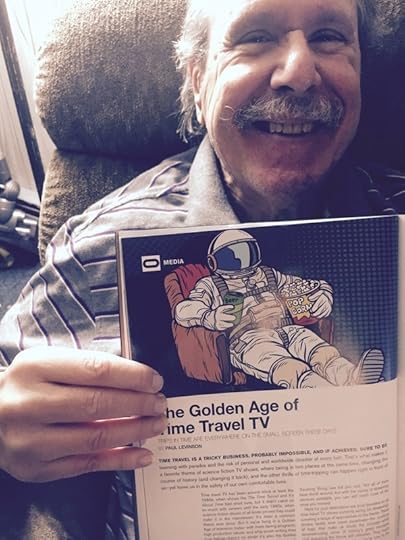 Paul Levinson's books ... Paul Levinson's music
Paul Levinson's books ... Paul Levinson's music
And pick up your copy of Omni - you'll love it!

 Paul Levinson's books ... Paul Levinson's music
Paul Levinson's books ... Paul Levinson's music
Published on October 29, 2017 15:35
October 27, 2017
Bladerunner 2049: The Only Better Movie of this Kind is Bladerunner, and Hey
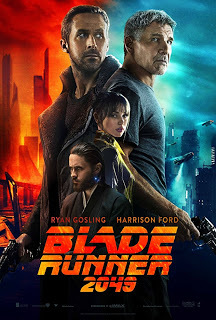
I loved it. So did my son Simon, who's now a father of his own. We loved it almost as much as the original Bladerunner, which we saw more than once on videotape, before there even were DVDs for rent, back in the early 1990s. That's high praise. The only reason Bladerunner 2049 wasn't as good as Bladerunner circa 1982 was that the 1982 movie broke so much new ground. Back in the mid-80s, when I was teaching in the MA in Media Studies Program at the New School, I asked Stephen Jacobs (who then was my student, and has long since become a professor himself, at the Rochester Institute of Technology) to give me an example of cyberpunk movies. "Bladerunner" he replied. It defined the field, at least in the movies. It was and still is that good. Not only that, it began Philip K Dick's run of stories made into great movies and TV series, with the current example of The Man in the High Castle on Amazon. And it inspired me to write The Civil Right of Robots.
But Bladerunner 2049 did as outstanding a job as could be done in a sequel for that kind of movie - moreover, a sequel on the screen some 35 years later. Rather than reviewing the plot, or even the acting - other than mentioning that both were excellent, and Ryan Gosling as "K" and Harrison Ford reprising his Deckard role were especially excellent - I'll go over certain points and questions which capture this visually and intellectually stunning film (and there will be spoilers):
Did you catch that "CCCP Soviet" sign on the building in LA? How could the Soviets still have a sign on a building in 2049? Maybe Putin managed to restore the Soviet Union? Possibly. But I think a better explanation is that Bladerunner 2049 and in turn Bladerunner are and were alternate realities from the outset. Or, at least they are now. The Bladerunner of 1982 took place in 2019, in a world that doesn't look much like our world does now, in 2017 (except insofar as Times Square has seemed increasingly Bladerunner-inspired in the past decade). So the makers of Bladerunner 2049 had to make a sequel in a world that looked 30 years later than the world of 2019 and how it was depicted in 1982. That world has Japan much on its mind - Japan looked like it could become the dominant computer power back then - and, of course, the Soviet Union and Russian were in everyone's head, too. Bladerunner 2049 has both Russian and Japanese all over the scenes. It could have not flashed Soviet at all, and benefitted from the unexpected prominence of Russia in our popular culture in the past year. But instead the sign says CCCP and Soviet - as a shorthand for saying this is the future of Bladerunner 1982/2019, not our future. Very nice touch.Did "K" die at the end? The convention in movie-making is that if (a) you're very badly wounded, and (b) you're lying motionless with your eyes open, then (c) you're dead. On the other hand, we've learned that the replicants can only be killed when their brains are destroyed, by a bullet, or, in the case of Niander's evil, powerful, beautiful replicant apprentice, by deprivation of oxygen because K drowned her. But nothing like that happened to K. He's been badly wounded - but I'd put my money on his not dying.So, is Decker a replicant or not? On the yes side, he has a pretty high survival quotient, too. And he did father a replicant with Rachel, who definitely was a replicant. But, wait, that's also evidence that he isn't a replicant, right? I mean, isn't it more likely that human sperm and replicant ovum created a living being, than replicant sperm and replicant ovum? I think so. I am a little less sure that Decker is human than K is alive, but I'd go with Decker as human if push came to shove.I enjoyed the Elvis in what's left of Las Vegas hologram, with a quick shot of Marilyn Monroe thrown in. (I just published Marilyn and Monet, so I'm always glad to see her given screen time, or for that matter, stage time, as in Anthony Marinelli's Max & Domino which I reviewed here just last week.) But Elvis belting it out on a stage is a fine homage to David Lynch, and there was a touch of Twin Peaks, somehow, in Bladerunner 2049.Highly recommend, for the senses and brain. Bladerunner 2049 is 2017 movie-making at top of its game. Kudos to Ridley Scott and everyone involved in this movie.
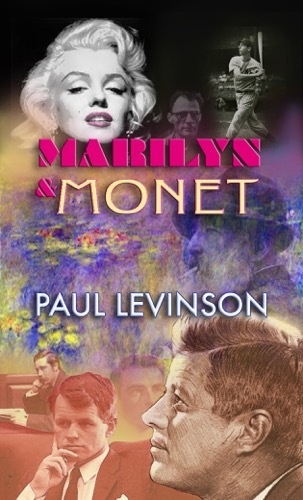
It all started in the hot summer of 1960, when Marilyn Monroe walked off the set of The Misfits and began to hear a haunting song in her head, "Goodbye Norma Jean" ... Paul Levinson's books ... Paul Levinson's music
Published on October 27, 2017 22:19
Mindhunter: Best of its Kind
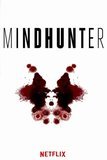 Imagine Criminal Minds - which my wife and I watched a lot of, but stopped, a year or two ago - as you might have wanted it to be: sharper intellectual focus, honest language, real serial killers, deeper character development, nudity when called for but actually no scenes of torture or murder - and you have Mindhunter, a 10-episode season (which I hope is the first) on Netflix. In other words, a show about the BAU, but at its inception in the late 1970s, and unencumbered by the limitations and ticks of network TV.
Imagine Criminal Minds - which my wife and I watched a lot of, but stopped, a year or two ago - as you might have wanted it to be: sharper intellectual focus, honest language, real serial killers, deeper character development, nudity when called for but actually no scenes of torture or murder - and you have Mindhunter, a 10-episode season (which I hope is the first) on Netflix. In other words, a show about the BAU, but at its inception in the late 1970s, and unencumbered by the limitations and ticks of network TV.Mindhunter is produced by House of Cards producer David Fincher, and unsurprisingly has such deft touches as subtitles when a couple are having a key conversation in a noisy bar, and the first mention I've ever heard (twice in Mindhunter) of Erving Goffman, a pathbreaking sociologist from the 1950s and 1960s who talked about the masks we all wear, and the difference between the front and back regions of our personas, or what we show to the world at large versus what we keep private to our families or closest relationships.
That high intellectual octane animates this whole series, and is brought to life by standout performances by Jonathan Groff as the young FBI agent Holden Ford trying to establish a science of understanding and even predicting psychos and sociopaths, and his older partner Bill Tench, played by Holt McCallany (Lights Out!), who pretty much supports what Holden is trying to do but is not entirely comfortable with his methods. In this battle to establish a new, more effective, scientifically grounded method of identifying and stopping serial killers, Mindhunter also bears strong resemblances to the recently aired and excellent Manhunt: Unabomber series (and there's a lot of Jim Fitzgerald who in reality broke the Unabomber case in the fictional Holden Ford), and even a little of Masters of Sex, which I was sorry to see cancelled.
As a special treat, Mindhunter has Fringe's Anna Torv as a sociologist who joins the team. She provides one of the Goffman references, and Holden's girlfriend, well-played by Hannah Gross, doing graduate work in sociology, offers the other. The serial killers, ranging from Richard Speck to Edmund Kemper, are truly chilling, and we get all this with words, not scenes of their horrific actions.
An old friend, photographer Emon Hassan, strongly recommended this series. I'm doing to same to all of you.

It all started in the hot summer of 1960, when Marilyn Monroe walked off the set of The Misfits and began to hear a haunting song in her head, "Goodbye Norma Jean" ... Paul Levinson's books ... Paul Levinson's music
Published on October 27, 2017 12:29
October 24, 2017
Dear Diary, Burning Leaves, Sammy and Esther: An Appealing Hand


 I'm going to conclude my reviews of the six semi-finalists in the New York New Works (NYNW) Theatre Festival which I saw on Friday night at The Duke on 42nd Street - all short plays - with an anthology review of a handful of three very different kinds of plays -
I'm going to conclude my reviews of the six semi-finalists in the New York New Works (NYNW) Theatre Festival which I saw on Friday night at The Duke on 42nd Street - all short plays - with an anthology review of a handful of three very different kinds of plays -One-person plays are always a challenge for the performer, and Christina Dewar came through on this brilliantly in Dear Diary, a meditation on a young woman's coming of age, sexually. In fact, I'd say Dewar's performance was at times a tour de force. She delivered her lines, which swung from wise to humorous, and often were both, with aplomb and style. She also wrote them. I'd say Christina Dewar is someone to watch as both a playwright and an actress.Burning Leaves is "a brief selection of scenes from the full-length" play, so it's a little difficult to judge. But what I saw is enough to make me want to see the complete play. Matt Leland left New York City for some unspecified unsetting reason. He's an actor, 32-years-old, and is trying to reestablish himself as a high school teacher in a small town in the midwest. He's a caring, sensitive person, and therefore takes time with a troubled male student - who soon wants to sleep with him. Burning Leaves therefore enters the difficult ethical thicket of what the teacher's appropriate response should be, since saying no for whatever good reason to the student could further shatter the student's already shaky self-image. Well written by Tom Rowan, with Matt very well acted by David Gow, and as I said, I'd definitely welcome a full version of this play.Sammy and Esther Are Breaking Up is a funny NYC straphanger - literally, taking place on one of our NYC subway cars - in which Sammy comes to terms with Esther, via appearances and interjections from his former relationships. Definitely good for a laugh.So, in the sum, these three short plays, as well as the three I reviewed over the weekend, made for a very enjoyable, provocative two+ hours at The Duke last Friday night. I hope they all go on to own bigger venues, but even if they don't, they've already made their mark in New York and thereby the world.
See also my reviews of the other NYNW semi-finalists: Max & Domino, Frozen West, and The Lady in the Woods.

It all started in the hot summer of 1960, when Marilyn Monroe walked off the set of The Misfits and began to hear a haunting song in her head, "Goodbye Norma Jean" ... Paul Levinson's books ... Paul Levinson's music
Published on October 24, 2017 12:02
"Working with Marshall McLuhan" and Marilyn Monroe on The Deuce 1.7!
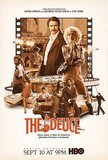 Just caught up with The Deuce 1.7 tonight - it was on HBO on Sunday - and was delighted to find it joined the eminent ranks of The Sopranos and Mad Men, with a reference to Marshall McLuhan!
Just caught up with The Deuce 1.7 tonight - it was on HBO on Sunday - and was delighted to find it joined the eminent ranks of The Sopranos and Mad Men, with a reference to Marshall McLuhan!It happened liked this ...
Candy (Maggie Gyllenhaal) working on a porn film with Harvey (David Krumholtz, who is getting to look a lot like Ron Jeremy) - actually, I guess you could say Candy is Assistant Director, or Assistant to the Director, I could never make sense out of those titles - buys a red bed cover, to replace the green one, which is making her "sea-sick," and may or may not be the underlying reason for the listless sex acting.

 Krumholtz left, porn filmmaker Ron Jeremy right, see what I mean?
Krumholtz left, porn filmmaker Ron Jeremy right, see what I mean?Harvey asks her how much she paid for the "schmata" (inexplicably slightly but distinctly mispronounced, with no emphasis on the "schma") - but my ears perked up immediately, as they do anytime I hear Yiddish on a television show.
"Red is a horny color," Candy replies. "you ever see a car ad?"
And Harvey comes back with "What, I am working with Marshall McLuhan?"
Now, that's not the best reference to McLuhan I ever heard - nothing about hot and cool, which would've worked well here - but, then, the references to McLuhan on The Sopranos and Mad Men were no great shakes, either. And then there's this: The Deuce takes place in 1971, which is a little after McLuhan's heyday in the 1960s, and before he came back with the now classic appearance in Woody Allen's Annie Hall (1977), so would a porn film director really have come up that reference at that time? But, hey, I'm not complaining.
And The Deuce 1.7 was excellent in other ways, too, with Candy really beginning to make her mark (I was going to say, come into her own, but thought the better of it) as a porn director, and a surprise shooting (of a gun) which changes a lot of things. And, as icing on the cake, Marilyn Monroe was mentioned in the episode (icing on the cake certainly for me, since my Marilyn and Monet was just published last week).
This is an excellent series, not surprising with David Simon, Richard Price, and George Pelecanos in creative production roles, and I'd be enjoying it even without the nudity and mentions of McLuhan and Marilyn.
here's a panel we did about Marshall McLuhan just last week

And here's mt novelette just published about Marilyn Monroe -
who also mentioned in tonight's episode of The Deuce
See also The Deuce: NYC 1971 By Way of The Wire and Mad Men 1.6. The Medium is the Message! -- Max & Domino for more on Marilyn
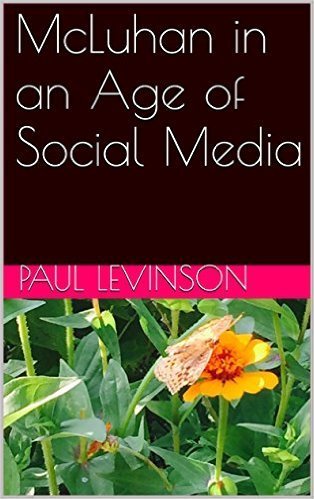
and, ok, you twisted my arm - here's a recent little
book I wrote about McLuhan Paul Levinson's books ... Paul Levinson's music
Published on October 24, 2017 00:10
October 22, 2017
Outlander 3.6: Reunion
 Well, some things are worth waiting for. And that would be an apt description of tonight's Outlander 3.6, in which Claire and Jamie finally get back together.
Well, some things are worth waiting for. And that would be an apt description of tonight's Outlander 3.6, in which Claire and Jamie finally get back together.The hour+ took its time, in a reunion that moved at a winningly human pace. They kiss pretty quickly - which is what they of course would do - but take their time before they get back in bed, which was realistic. The two need to get to know each other again, or at least know that the love they had twenty years ago is still coursing between them.
Twenty years is a long time. And this reunion, after all that time, is what makes Outlander unique in time travel stories. Ordinarily in time travel - which seems a little oxymoronic, because there is nothing ordinary where time travel is concerned, but - people can spend years or longer away from one another in different times, and then travel back to the original time, where one of the two people hasn't aged a day. That of course can be strange, but what we saw tonight was even stranger - but, in some ways, more human.
The acting both by Caitriona Balfe and Sam Heughan was really sensitive and superb. The expressions on their faces, their tones of voice, their body language was just right for a couple spending a night together after twenty years - on the way, one and they can certainly hope, to being this way, together again, for the rest of their lifetimes.
I almost wouldn't have minded if the season ended with tonight's episode, it was so satisfying. But there are problems, arising not only out of Jamie's work, but Claire's ultimately not wanting to go without ever seeing their daughter again.
It took a long time to get there, but Outlander is back on track.
See also Outlander Season 3 Debut: A Tale of Two Times and Places ...Outlander 3.2: Whole Lot of Loving, But ... Outlander 3.3: Free and Sad ... Outlander 3.4: Love Me Tender and Dylan ... Outlander 3.5: The 1960s and the Past
And see also Outlander 2.1: Split Hour ... Outlander 2.2: The King and the Forest ... Outlander 2.3: Mother and Dr. Dog ... Outlander 2.5: The Unappreciated Paradox ... Outlander 2.6: The Duel and the Offspring ...Outlander 2.7: Further into the Future ... Outlander 2.8: The Conversation ... Outlander 2.9: Flashbacks of the Future ... Outlander 2.10: One True Prediction and Counting ... Outlander 2.11: London Not Falling ... Outlander 2.12: Stubborn Fate and Scotland On and Off Screen ... Outlander Season 2 Finale: Decades
And see also Outlander 1.1-3: The Hope of Time Travel ... Outlander 1.6: Outstanding ... Outlander 1.7: Tender Intertemporal Polygamy ...Outlander 1.8: The Other Side ... Outlander 1.9: Spanking Good ... Outlander 1.10: A Glimmer of Paradox ... Outlander 1.11: Vaccination and Time Travel ... Outlander 1.12: Black Jack's Progeny ...Outlander 1.13: Mother's Day ... Outlander 1.14: All That Jazz ... Outlander Season 1 Finale: Let's Change History

It all started in the hot summer of 1960, when Marilyn Monroe walked off the set of The Misfits and began to hear a haunting song in her head, "Goodbye Norma Jean" ... Paul Levinson's books ... Paul Levinson's music
Published on October 22, 2017 23:15
Ray Donovan 5.11: I'm with Mickey
 An unusually grim and searing Ray Donovan 5.11 tonight, and that's saying a mouthful, since Ray is if nothing grim and searing, and never more than in this season. But tonight ...
An unusually grim and searing Ray Donovan 5.11 tonight, and that's saying a mouthful, since Ray is if nothing grim and searing, and never more than in this season. But tonight ...I gotta say I'm with Daryll in not understanding what Ray has against Mickey, and with Mickey when he says he's not going to turn the cheek anymore. Mickey out to get Ray is as profound an upheaval in this series as Abby's death, and for that reason it's a powerful move in the narrative.
But what indeed does Ray have against his father? I know Mickey did nothing when his sons were molested, and through these seasons has often acted selfishly and put members of the family at risk. But Mickey has also acted unselfishly, if not quite selflessly, and done extraordinary things on behalf of the family, including Ray. Think about it.
So what are Ray's reasons for not pinning the murder of Frank on Avi, who is out of the country and relatively safe from FBI nabbing? The only thing I can think of is that, by punishing Mickey, Ray is punishing himself for the guilt he feels in everything surrounding Abby's death.
And the irony is he shouldn't feel so guilty about that. What he did to Bridget's boyfriend was reprehensible, but Ray did it to save his wife. True, he was taking that ultimate decision out of her hands, but had the surgery saved her, isn't that what Abby would have wanted?
This season, with just one more episode to go, is shaping up as the most painful but best of the Ray Donovan seasons - because pain has aways been one of the mainstays of this story.
See Ray Donovan 5.1: Big Change ... Ray Donovan 5.4: How To Sell A Script ... Ray Donovan 5.7: Reckonings ... Ray Donovan 5.8: Paging John Stuart Mill ... Ray Donovan 5.9: Congas ... Ray Donovan 5.10: Bunchy's Money
See also Ray Donovan 4.1: Good to Be Back ... Ray Donovan 4.2: Settling In ... Ray Donovan 4.4: Bob Seger ... Ray Donovan 4.7: Easybeats ... Ray Donovan 4.9: The Ultimate Fix ... Ray Donovan Season 4 Finale: Roses
And see also Ray Donovan 3.1: New, Cloudy Ray ... Ray Donovan 3.2: Beat-downs ... Ray Donovan 3.7: Excommunication!
And see also Ray Donovan 2.1: Back in Business ... Ray Donovan 2.4: The Bad Guy ... Ray Donovan 2.5: Wool Over Eyes ... Ray Donovan 2.7: The Party from Hell ... Ray Donovan 2.10: Scorching ... Ray Donovan 2.11: Out of Control ... Ray Donovan Season 2 Finale: Most Happy Ending
And see also Ray Donovan Debuts with Originality and Flair ... Ray Donovan 1.2: His Assistants and his Family ... Ray Donovan 1.3: Mickey ... Ray Donovan 1.7 and Whitey Bulger ... Ray Donovan 1.8: Poetry and Death ... Ray Donovan Season 1 Finale: The Beginning of Redemption
Just published ...

It started in the hot summer of 1960, when Marilyn Monroe walked off the set of The Misfits and began to hear a haunting song in her head, "Goodbye Norma Jean" ... Paul Levinson's books ... Paul Levinson's music
Published on October 22, 2017 22:55
Curb Your Enthusiasm 9.4: "Hold You in his Armchair"
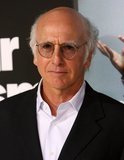 So, as I've mentioned here several times, I have something of a principle - well, not quite a principle, maybe more of just a practice - of not reviewing comedies. They rarely have continuing storylines, and the act of reviewing always seemed somewhat antithetical to the very notion of comedy. Yet I started against my better judgement to review this ninth season of Curb Your Enthusiasm, and I've been drawn so inextricably into comedy that I've even reviewed three short plays this weekend, two of which are comedies (see my review of Anthony Marinelli's Max & Domino, for example). So clearly, there's nothing to be gained by resisting a review of another episode of Curb.
So, as I've mentioned here several times, I have something of a principle - well, not quite a principle, maybe more of just a practice - of not reviewing comedies. They rarely have continuing storylines, and the act of reviewing always seemed somewhat antithetical to the very notion of comedy. Yet I started against my better judgement to review this ninth season of Curb Your Enthusiasm, and I've been drawn so inextricably into comedy that I've even reviewed three short plays this weekend, two of which are comedies (see my review of Anthony Marinelli's Max & Domino, for example). So clearly, there's nothing to be gained by resisting a review of another episode of Curb.In this case - a review of tonight's 9.4 - I drew the title from Rob Sheffield's masterful book, Dreaming the Beatles, and its maybe facetious discussion of whether the line in John Lennon's "Come Together" is "feel you in his arms, yeah, you can feel his disease" or "feel you in his armchair, you can feel his disease". Never mind that the second makes no sense. Sheffield says there's been a decades-long debate about which it is.
And what does this have to do with tonight's Curb? Well, the least funny part of the episode, but still pretty funny, was Larry's quest to get his shrink (played by Bryan Cranston!) to get Larry a more comfortable armchair for their therapy sessions. Hence the connection between armchair and therapy in Curb 9.4 and the armchair and disease lines in "Come Together".
Larry's disputing whether the patient is bound by doctor/patient confidentiality was funnier, and more profound. And as almost always, I think Larry is right.
But the funniest, burst-out-laughing part came during Funkhouser's eulogy for his nephew, which Larry first disrupts in his pursuit of his reserved seat, then any seat, then someone who Larry is sure is about to enact the fatwa on him, but of course turns out just to be a late guest in Middle Eastern garb. Anything Funkhouser does is funny, but this memorial scene was pure gold.
(The length of flies routine - the kind that zip and unzip - was also hilarious. Some maybe that's a tie with the interrupted Funkhouser eulogy.)
Ok, enough of this comedy. Time to turn to the grim and brutal Ray Donovan, which I'll do in my next review.
See also: Curb Your Enthusiasm 9.1: Hilarious! ... Curb Your Enthusiasm 9.2: Wife Swapping ... Curb Your Enthusiasm 9.3: Benefits

It started in the hot summer of 1960, when Marilyn Monroe walked off the set of The Misfits and began to hear a haunting song in her head, "Goodbye Norma Jean" ... Paul Levinson's books ... Paul Levinson's music
Published on October 22, 2017 22:35
The Lady in the Woods: The Snake, with a Twist and Political Upshot
 Continuing my reviews of the six semi-finalists in the New York New Works (NYNW) Theatre Festival which I saw on Friday night at The Duke on 42nd Street - short plays, all of which were excellent - we have Hyten Davidson's The Lady in the Woods, which takes place in "a cabin the forest, upstate New York, the present, late November". In other words, in both place and time, pretty close to home. In more ways than one.
Continuing my reviews of the six semi-finalists in the New York New Works (NYNW) Theatre Festival which I saw on Friday night at The Duke on 42nd Street - short plays, all of which were excellent - we have Hyten Davidson's The Lady in the Woods, which takes place in "a cabin the forest, upstate New York, the present, late November". In other words, in both place and time, pretty close to home. In more ways than one.For although The Lady in the Woods may sound like an allegory, and it actually is, it has cutting-edge relevance to what we see and hear on the news every day. The Lady welcomes a man from the forest with frostbite on his feet and frost in his hair into her home, where she's alone, and offers him food. Much like the "tender-hearted woman" in Al Wilson's 1968 hit record, "The Snake" (which also frost on its skin) (written by Oscar Brown and co-produced by the great Johnny Rivers), in turn based on "The Farmer and the Viper," an Aesop's fable.
Here's the song in case you don't remember or never heard of it:
So in the song and the fable, the woman (farmer in the fable) are rewarded for their kindness by death from the snake (viper) which proceeds to more than the bite the hands that fed them. Now if that moral sounds queasily familiar, it may be because none other than Donald Trump read lyrics from "The Snake" at campaign rallies in 2016 and after he became President in 2017, to illustrate his argument about what would happen if we good Americans let Syrian refugees into our country (I wish I were kidding).
But this makes the ending of The Lady in the Woods even more notable. I won't give that ending explicitly away, but suffice to say that our Lady does not end up the same as the tender-hearted woman in Al Wilson's song, or Trump's painting of Americans in her image.
Very well acted by Laura Frenzer as the Lady, and Jack Coggins as the man from the forest. See it if you can.

It all started in the hot summer of 1960, when Marilyn Monroe walked off the set of The Misfits and began to hear a haunting song in her head, "Goodbye Norma Jean" ...
Paul Levinson's books ... Paul Levinson's music
Published on October 22, 2017 11:34
October 21, 2017
Frozen West: Science Fiction, Literally
 Hey, most of you know I write, watch, and read a lot of science fiction - not always in that order - so I was especially pleased to see Frozen West at The Duke on 42nd Street last night, one of six short plays which are semi-finalists in the New York New Works (NYNW) Theatre Festival, all of which were excellent. Now, Frozen West may not be what you or I usually expect when the genre of science fiction comes up - because this short play is about something which is not only possible but scientifically real, right now. Frozen West is, in other words, literally a work of fiction about science - or, literally science fiction.
Hey, most of you know I write, watch, and read a lot of science fiction - not always in that order - so I was especially pleased to see Frozen West at The Duke on 42nd Street last night, one of six short plays which are semi-finalists in the New York New Works (NYNW) Theatre Festival, all of which were excellent. Now, Frozen West may not be what you or I usually expect when the genre of science fiction comes up - because this short play is about something which is not only possible but scientifically real, right now. Frozen West is, in other words, literally a work of fiction about science - or, literally science fiction.The science which today is real and indeed has been so since 1967 is cryonics, or the deep freezing of human bodies after death with a view to reviving them at some point in the future, when our descendants discover a way of unthawing without damage and curing the illness that killed the frozen deceased. Wikipedia says that as of 2014 there are about 250 people in such "suspended" (not dead!, as one of the characters in Frozen West, Dana, keeps insisting), including baseball great Ted Williams (but not Walt Disney or Robert Heinlein, contrary to the urban legends that they are frozen).
The action in Frozen West - actually, talk, not action - takes place in a cold room, with six (I think) frozen heads (a cheapo option for those who opt for the freeze), where the room's caretaker, the aforementioned Dana, converses about cryonics and the nature of life and the world with a new acquaintance, Naomi. Both parts are well played. But Naomi delivers the funniest lines, makes the best faces, and Maggie Dunleavy animates the role with a special spunk and style.
Davis Alianiello is the playwright, and he's given us a sometimes laugh-out-loud, philosophically rich clip of banter, that captures the state of life in the 21st century.

It all started in the hot summer of 1960, when Marilyn Monroe walked off the set of The Misfits and began to hear a haunting song in her head, "Goodbye Norma Jean" ...
Paul Levinson's books ... Paul Levinson's music
Published on October 21, 2017 16:55
Levinson at Large
At present, I'll be automatically porting over blog posts from my main blog, Paul Levinson's Infinite Regress. These consist of literate (I hope) reviews of mostly television, with some reviews of mov
At present, I'll be automatically porting over blog posts from my main blog, Paul Levinson's Infinite Regress. These consist of literate (I hope) reviews of mostly television, with some reviews of movies, books, music, and discussions of politics and world events mixed in. You'll also find links to my Light On Light Through podcast.
...more
- Paul Levinson's profile
- 342 followers



